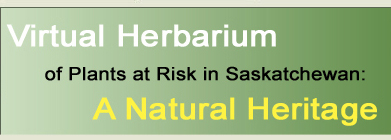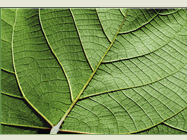| POACEAE
KEY FOR GENERA FOUND IN SASKATCHEWAN |
| |
| 1 Spikelets with one fertile floret,
may have one sterile or male floret below the fertile floret; spikelets
dorsally compressed; separation below the glumes |
2 |
| 1 Spikelets with one or more fertile
florets; sterile florets if present above the fertile florets; spikelets
laterally compressed; separation usually above the glumes (except Beckmannia,
Leersia, Spartina, and Sphenopholis) OR with
two sterile or male florets below the single perfect floret |
10 |
| |
|
2 Spikelets in pairs; glumes leathery;
palea membranous
|
3 |
| 2 Spikelets not in pairs; glumes membranous;
palea hardened |
5 |
| |
|
| 3 Each stem terminating in a single
spike |
Schizachyrium |
| 3 Each stem terminating in panicles
with 2 to many branches |
4 |
| |
|
| 4 Tufted perennials; inflorescences
terminal and axillary, composed of finger-like clusters; inflorescences
subtended by a modified leaf; central axis and flower stalks white or yellow
hairy |
Andropogon |
| 4 Rhizomatous perennials; inflorescences
terminal, composed of elongate central axes and branched branches; central
axis and flower stalks yellow-brown hairy |
Sorghastrum |
| |
|
| 5 Spikelets subtended by a whorl of
one to many rough bristles (inserted below the ovary) |
Setaria |
| 5 Spikelets without a whorl of rough
bristles |
6 |
| |
|
| 6 Glumes or lower (sterile) lemmas
awned |
Echinochloa |
| 6 Glumes and lemmas without awns |
7 |
| |
|
| 7 Inflorescence a slender, spike-like
raceme; upper lemmas and paleas cartilaginous; ligule membranous |
Digitaria |
| 7 Inflorescence an open, branched
cluster; upper lemmas and paleas dry and membranous to hardened; ligule,
when present, a ring of hairs |
8 |
| |
|
| 8 At least some leaves without ligules |
Echinochloa |
| 8 All leaves with ligules |
9 |
| |
|
| 9 Basal leaves (winter rosette) different
from stem leaves; spikelets obtuse to acute; second glume and sterile lemma
long-hairy |
Dichanthelium |
| 9 Basal and stem leaves similar; spikelets
tapered to a long or short point; second glume and sterile lemma slightly
rough-hairy |
Panicum |
| |
|
| 10 Spikelets with one floret; lemmas
terminating in a 3-branched awn |
Aristida |
| 10 Spikelets with one or more florets;
lemmas not terminating in a 3-branched awn |
11 |
| |
|
| 11 Spikelets with 2 male or sterile
florets below the single perfect floret |
12 |
| 11 Spikelets not as above |
13 |
| |
|
| 12 Spikelets with 2 male florets below
the single perfect floret; florets brown; plant sweet smelling |
Hierochloë |
| 12 Spikelets with 2 sterile florets
below the single perfect floret; florets pale or green; plants not sweet
smelling |
Phalaris |
| |
|
| 13 Spikelets unisexual, inflorescence
with spikelets of two kinds borne in distinct regions; large aquatic annuals |
Zizania |
| 13 Spikelets unisexual or bisexual,
spikelets all appearing similar; annual or perennial, mostly terrestrial |
14 |
| |
|
| 14 Spikelets sessile or nearly so
in a spike, usually 2-ranked (spikes may be arranged in branched clusters) |
15 |
| 14 Spikelets distinctly stalked, in
branched or unbranched clusters |
36 |
| |
|
| 15 Spikelets on one side of the central
axis; spikes solitary or in heads, spikes, or panicles |
16 |
| 15 Spikelets in rows on opposite sides
of the central axis; spikes solitary and elongate |
21 |
| |
|
| 16 Spikelets unisexual (the two sexes
on the same or on separate plants); female spikelets in bur-like clusters |
Buchloë |
| 16 Spikelets bisexual; spikes not
in bur-like clusters |
17 |
| |
|
| 17 Plants with runners and hairy stems;
leaves in bundles; inflorescence head-like and hidden among the leaves |
Munroa |
| 17 Plants not both with runners and
hairy stems, but may be with one or the other; leaves not in bundles; inflorescence
not head-like and hidden among the leaves |
18 |
| |
|
| 18 Spikes comb-like, solitary or in
unbranched clusters; spikelets more than 4 mm long |
19 |
| 18 Spikes not comb-like, in simple
clusters; spikelets less than 4 mm long |
20 |
| |
|
| 19 Stems 20 – 40 cm tall; leaves
1 – 7 mm wide; spikes 1 – 2; fertile lemma 3-cleft at apex,
teeth short awned or at least sharp-pointed; plants of dry ground |
Bouteloua |
| 19 Stems 30 – 150 cm tall; leaves
2 – 15 mm wide; spikes more than 3; fertile lemma entire or with two
rounded teeth; plants of moist or saline soil |
Spartina |
| |
|
| 20 Leaves flat, 5 – 10 mm wide;
inflorescence narrow; spikelets nearly round, about 3 mm long; glumes unequal,
narrow; plants of wet ground |
Beckmannia |
| 20 Leaves twisted, 1 – 2 mm
wide; inflorescence open; spikelets lance-shaped, about 4 mm long; glumes
equal, broad; plants of dry ground |
Schedonnardus |
| |
|
| 21 Spikelets solitary at each node
of the central axis |
22 |
| 21 Spikelets 2 or more at each node
of the central axis |
29 |
| |
|
| 22 Spikelets oriented with the edge
towards the central axis; usually with only one glume |
Lolium |
| 22 Spikelets oriented with the broad
side towards the central axis; 2 glumes usually present |
23 |
| |
|
| 23 Plants annual, cultivated (usually
found near the cultivated fields); lemmas eccentrically keeled, nerves converging
to form an awn, or not converging at apex |
24 |
| 23 Plants perennial or weedy annuals;
lemmas rounded or obscurely keeled, nerves converging toward apex |
25 |
| |
|
| 24 Glumes broad, 3-nerved; lemma nerves
not converging at apex |
Triticum |
| 24 Glumes linear-narrowly triangular,
1-nerved; lemma nerves converging to form an awn |
Secale |
| |
|
| 25 Spikes strongly flattened and comb-like;
spikelets divergent; leaves relatively short and rigid; tufted annuals |
Agropyron |
| 25 Spikes not flattened and comb-like,
round or nearly so; spikelets ascending; leaves longer, not rigid; perennials |
26 |
| |
|
| 26 Glumes and lemmas blunt at apex,
occasionally with a sharp point; stems solid |
Thinopyrum |
| 26 Glumes and lemmas acute to awned
at apex; stems hollow |
27 |
| |
|
| 27 Rhizome short or absent; spike
open; spikelets distant, generally shorter than internodes; glumes 4 –
6-nerved; lemma awns 1 – 2 cm long, divergent |
Pseudoroegneria |
| 27 Plants not as above |
28 |
| |
|
| 28 Glumes rigid; ear-like lobes at
base of leaf often purplish; plants bluish green |
Pascopyrum |
| 28 Glumes not rigid; ear-like lobes
at base of leaf yellowish-green; plants green or gray-green |
Elymus |
| |
|
| 29 Spikelets in threes at each node
of central axis, 1-flowered, the lateral pair of spikelets usually reduced
to awns |
Hordeum |
| 29 Spikelets in pairs at least at
some nodes of central axis, 2 – 6-flowered, spikelets all similar |
30 |
| |
|
| 30 Spikelets paired at lower nodes,
solitary at middle and upper nodes |
X Elyhordeum |
| 30 Spikelets paired at all nodes |
31 |
| |
|
| 31 Rhizomes long, creeping and stout;
spikelets mostly hairy |
32 |
| 31 Rhizomes short or absent; spikelets
hairy or hairless |
35 |
| |
|
| 32 Glumes lance-shaped |
Leymus |
| 32 Glumes narrowly triangular |
33 |
| |
|
| 33 Glumes purplish; lemmas densely
hairy with long, silky hairs |
Leymus |
| 33 Glumes greenish; lemmas hairless
or otherwise hairy |
34 |
| |
|
| 34 Lemmas awnless |
Leymus |
| 34 Lemmas awned |
Elyleymus |
| |
|
| 35 Glumes narrowly triangular, not
broadened above the base, not awned; lemmas awnless or with a short awn |
Psathrostachys |
| 35 Glumes narrowly lance-shaped, somewhat
broadened above the base, commonly awned; lemmas frequently long-awned (0.5
– 4 cm) |
Elymus |
| |
|
| 36 Spikelets very flat and 1-flowered;
glumes absent or small; stamens 6 |
Leersia |
| 36 Spikelets more or less compressed
but not flattened, one or more flowered; one or two glumes present; stamens
3 |
37 |
| |
|
| 37 Spikelets with one perfect floret |
38 |
| 37 Spikelets with two or more perfect
florets |
55 |
| |
|
| 38 Lemma hardened, enclosing palea
and caryopsis |
39 |
| 38 Lemma thin, commonly membranous,
not enclosing palea and caryopsis |
45 |
| |
|
| 39 Lemma awnless |
Milium |
| 39 Lemma awned |
40 |
| |
|
| 40 Florets plump; lemma awn weak and
deciduous |
41 |
| 40 Florets slender; lemma awn firm
and persistent |
43 |
| |
|
| 41 Inflorescence diffusely branched;
glumes sharp-pointed; lemma long, silky hairy |
Achnatherum |
| 41 Inflorescence not diffusely branched;
glumes blunt to soft-pointed; lemma hairless to short hairy |
42 |
| |
|
| 42 Leaves flat, to over 1 cm broad;
spikelets 6 – 8 mm long, not including the awn; glumes distinctly
7-nerved |
Oryzopsis |
| 42 Leaves rolled, to 2 mm broad; spikelets
3 - 5 mm long, not including awn; glumes obscurely 5-nerved |
Piptatherum |
| |
|
| 43 Glumes at least 1.5 cm long; lemma
8 – 20 mm long, awn 10 – 20 cm long |
Hesperostipa |
| 43 Glumes 1.5 cm long or less; lemma
4 – 6 mm long, lemma awn less than 6 cm long |
44 |
| |
|
| 44 Inflorescences open, branches spreading
or drooping (if narrow and ascending, then lower nodes of inflorescence
hairless and hardened thickening below lemma sharp-pointed) |
Achnatherum |
| 44 Inflorescence narrow, branches
ascending to erect, lower nodes of inflorescence always long hairy
and hardened thickening below lemma short and broad |
Nasella |
| |
|
| 45 Florets stalked; stamens 1 |
Cinna |
| 45 Florets not stalked; stamens usually
3 |
46 |
| |
|
| 46 Lemmas awned |
47 |
| 46 Lemmas awnless |
51 |
| |
|
| 47 Separation below the glumes; inflorescence
dense and spike-like |
48 |
| 47 Separation above the glumes, glumes
persisting on mature inflorescence; inflorescences various |
49 |
| |
|
| 48 Glumes long-awned |
Polypogon |
| 48 Glumes awnless |
Alopecurus |
| |
|
| 49 Hardened thickening below lemma
bearing a tuft of long, straight hairs; lemma awned from the back below
the middle |
Calamagrostis |
| 49 Hardened thickening below lemma
hairless; lemma awned from tip or near tip |
50 |
| |
|
| 50 Delicate annuals; lemma awned on
back, but above the middle |
Agrostis |
| 50 Perennials; lemma awned from tip |
Muhlenbergia |
| |
|
| 51 Inflorescence cylindrical, dense,
spike-like; glumes prominently boat-shaped or folded |
Phleum |
| 51 Inflorescence condensed to open
but not cylindrical; glumes not conspicuously boat-shaped or folded |
52 |
| |
|
| 52 Hardened thickening below lemma
with a prominent tuft of hairs; lemma 1-nerved |
Calamovilfa |
| 52 Hardened thickening below lemma
without a prominent tuft of hairs; lemma 3 – 5-nerved |
53 |
| |
|
| 53 Ligule a fringe of hairs; grain
plump, nearly round |
Sporobolus |
| 53 Ligule membranous; grain not plump
and not round |
54 |
| |
|
| 54 Inflorescences open; glumes surpassing
the lemmas |
Agrostis |
| 54 Inflorescences narrow and/or glumes
shorter than lemmas |
Muhlenbergia |
| |
|
| 55 Glume shorter than first floret;
spikelets with 2 – many perfect florets; lemmas, if awned, awned from
the tip or two-toothed apex |
56 |
| 55 Glume as long as first floret or
longer; spikelets generally with 3 or fewer perfect florets; lemmas if awned,
awned from the back |
71 |
| |
|
| 56 Inflorescence feathery, central
axis with long silky hairs; tall reeds |
Phragmites |
| 56 Inflorescence not feathery, central
axis hairless or otherwise hairy; not tall reeds |
57 |
| |
|
| 57 Spikelets subsessile in one-sided
clusters, strongly compressed |
Dactylis |
| 57 Spikelets stalked or sessile but
not in one sided clusters or strongly compressed |
58 |
| |
|
| 58 Lemmas 3-nerved, awnless; ligule
of hairs or fringed |
59 |
| 58 Lemmas 5 – 11-nerved, may
be awned; ligules membranous |
61 |
| |
|
| 59 Glumes and lemmas rounded on back;
spikelets with 2 fertile florets |
Catabrosa |
| 59 Glumes and lemmas boat-shaped;
spikelets with more than 2 fertile florets |
60 |
| |
|
| 60 Spikelets with 3 to many florets;
glumes and lemmas thin and membranous |
Eragrostis |
| 60 Spikelets with up to 5 florets;
glumes and lemmas green |
Poa |
| |
|
| 61 Inflorescence with a few solitary
branches; glumes papery; lemmas dissimilar, spikelet terminating in a club-shaped
rudiment |
Melica |
| 61 Inflorescence usually compound;
glumes not papery; lemmas similar, spikelet reduced at top but not modified
into club-shaped rudiment |
62 |
| |
|
| 62 Lemmas boat-shaped, awnless |
63 |
| 62 Lemmas rounded (if keeled, only
near tip), may be awned |
64 |
| |
|
| 63 Plants dioecious; lemmas 9 –
11-nerved, rigid, and leathery; leaves rolled to flat, stiff; habitats usually
saline |
Distichlis |
| 63 Plants with bisexual florets; lemmas
5-nerved, green or membranous; leaves softer, commonly boat-shaped at tip;
habitats various |
Poa |
| |
|
| 64 Lemmas distinctly 2-lobed at apex,
often awned from apical notch |
65 |
| 64 Lemmas entire or toothed, awn terminal |
66 |
| |
|
| 65 Hardened thickening at base of
lemma bearded; ligule sheathing the stem and continuous with front sheath |
Schizachne |
| 65 Hardened thickening at base of
lemma not bearded; ligule not sheathing the stem |
Bromus |
| |
|
| 66 Hardened thickening at base of
florets bearded; lemmas toothed at apex |
Scolochloa |
| 66 Hardened thickening at base of
florets not bearded; lemmas entire |
67 |
| |
|
| 67 Lemma nerves arced, converging
to midrib; lemmas awned |
68 |
| 67 Lemma nerves parallel, not converging;
lemmas not awned |
69 |
| |
|
| 68 Anthers 1; stems < 50 cm tall,
annual |
Vulpia |
| 68 Anthers 3; stems frequently taller
than 50 cm, perennial |
Festuca |
| |
|
| 69 Lemma nerves 5, faint; plants of
saline habitats |
Puccinellia |
| 69 Lemma nerves 7, conspicuous; plants
of moist habitats |
70 |
| |
|
| 70 Leaf sheaths open; second glumes
3-nerved |
Torreyochloa |
| 70 Leaf sheaths at least partially
united; glumes 1-nerved |
Glyceria |
| |
|
| 71 Lemma awnless or with a very short
awn |
72 |
| 71 Lemma distinctly awned |
74 |
| |
|
| 72 Inflorescence spike-like; glumes
unequal in length but similar in shape; separation above the glumes |
Koeleria |
| 72 Inflorescence dense to open but
not spike-like; glumes similar or dissimilar; separation below the glumes |
73 |
| |
|
| 73 Glumes dissimilar, the first linear,
the second wider; leaves to 5 mm broad |
Sphenopholis |
| 73 Glumes similar in shape but unequal
in length; leaves to 1 cm broad |
Trisetum |
| |
|
| 74 Awn flattened, twisted, inserted
in the notch between apical teeth; ligule a tuft of hairs |
Danthonia |
| 74 Awn not flattened, awn inserted
dorsally; ligule membranous |
75 |
| |
|
| 75 Lemmas 4-nerved, apex nearly square,
2 – 4-toothed; spikelets less than 1 cm long |
Deschampsia |
| 75 Lemmas 5 – 9-nerved, apex
tapering, 2-toothed; spikelets greater than 1 cm long |
76 |
| |
|
| 76 Glumes 2 – 3.5 cm long, usually
7-nerved |
Avena |
| 76 Glumes less than 1.5 cm long, usually
5-nerved |
Avenula |






